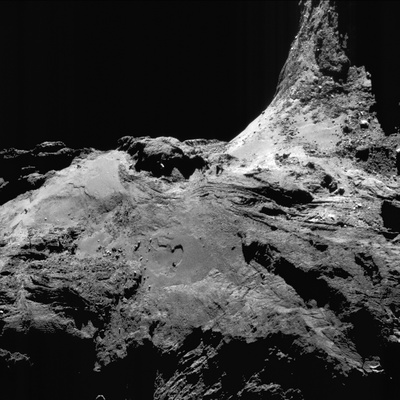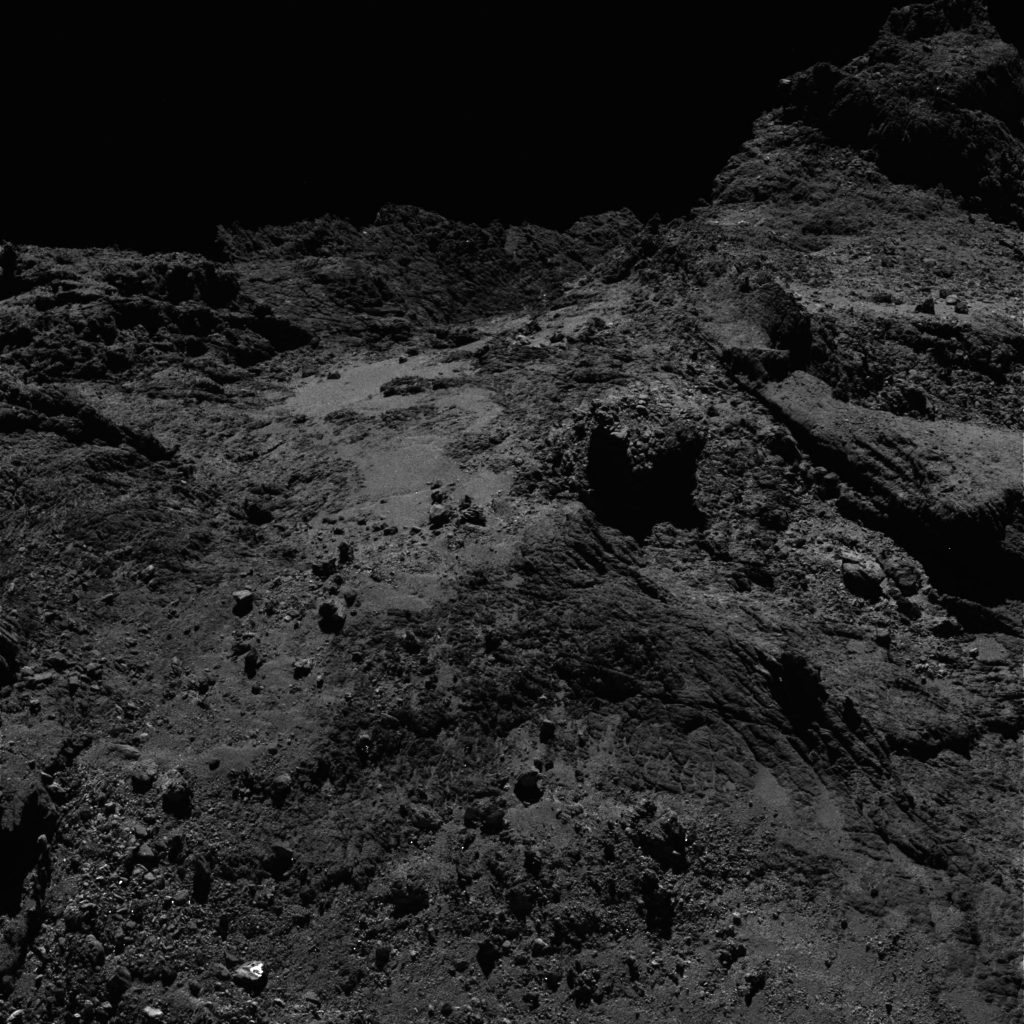CometWatch 25 June 2016
The image shows a portion of the large comet lobe, with the neck region and a hint of the small lobe on the upper right.
Dominated by the smooth terrains of Anubis, on the large lobe, this scene reveals the many boulders scattered across this region, as well as a number of surface features visible in the dust cover. A similar view of this area, taken from a comparable distance but different perspective, was featured in CometWatch 1 May.
In the central left portion of the image, towards the upper edge of the nucleus, some elevated, shadow-casting structures mark the boundary between Anubis and Seth. Parts of the more complex Atum region are visible in the bottom part of the image, exhibiting a number of linear features especially towards the lower right corner, close to the boundary with the neighbouring Geb region.
On the upper right, along the neck, the smooth region of Hapi, covered in dust and plenty of boulders, guides the eye towards the rougher Anuket, partly cast in shadow.
Another image, taken on the same day with Rosetta's OSIRIS narrow-angle camera, shows a detailed view of an entirely different portion of the large comet lobe, at the meeting point between the regions of Khepry (upper left), Imhotep (right) and Bes (bottom).
OSIRIS narrow-angle camera image taken on 25 June 2016, when Rosetta was 17.9 km from Comet 67P/C-G. The scale is 0.31 m/pixel and the image measures about 630 m. Credits: ESA/Rosetta/MPS for OSIRIS Team MPS/UPD/LAM/IAA/SSO/INTA/UPM/DASP/IDA

